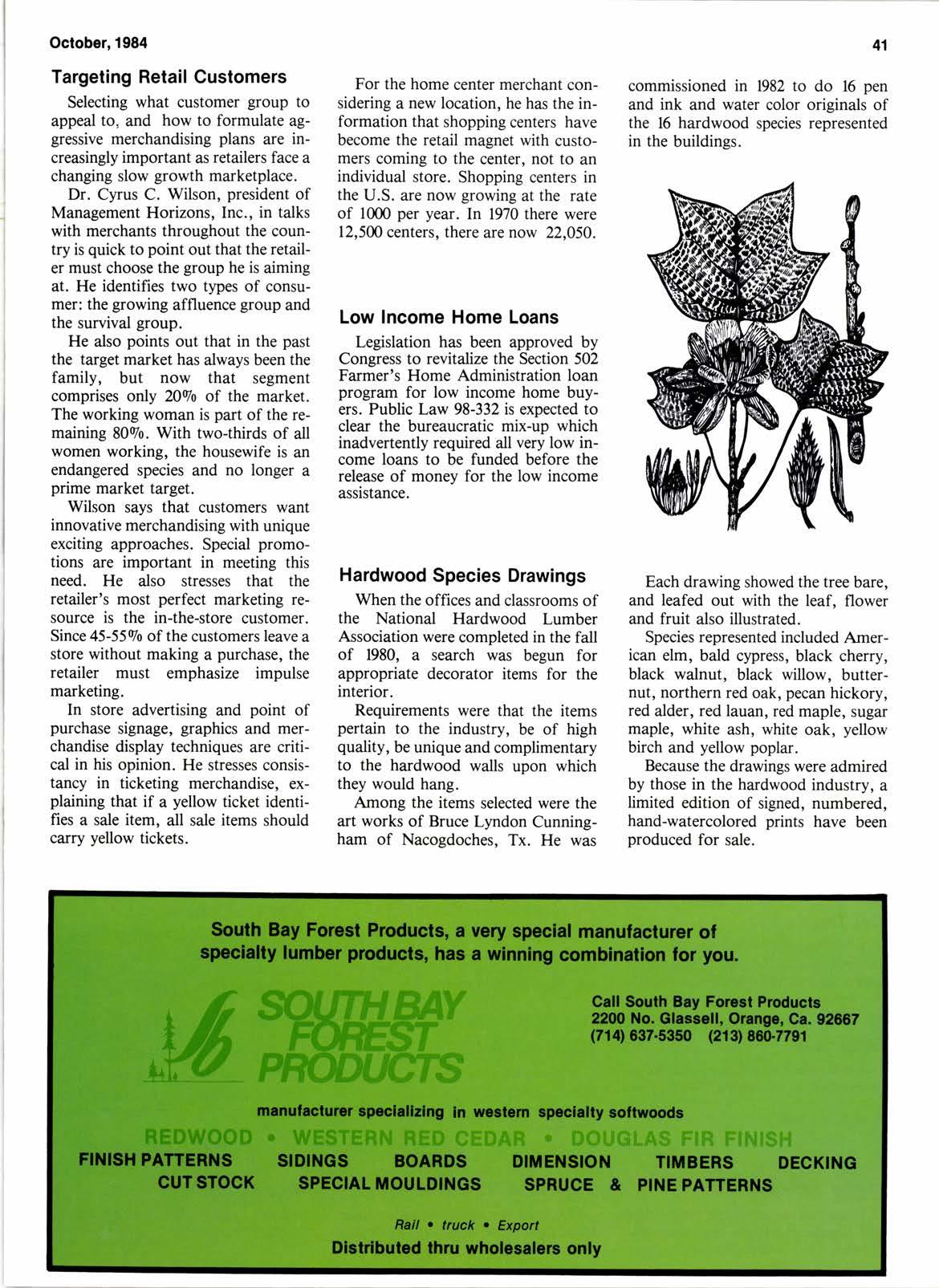
3 minute read
AIIYan Aduertising system
AWPI Flles For EPA Hearlng
The American Wood Preservers Institute has filed for a hearing concerning EPA's decision on the wood preservatives creosote, pentachlorophenol and inorganic arsenicals.
"The agency (EPA) has gone overboard with a politically motivated decision," says Theodore J. Duke, president of AWPI. "As long ago as March 30, 1983, EPA published a public notice in the Federal Register which said: 'The Agency believes that these proposed modifications to the terms and conditions of registration, which the majority of the registrants voluntarily agree to implement, will cause the benefits of use to exceed the risks of use."'
"We are not objecting to regulation per se," Duke said. "As the notice says, we volunteered to do what was needed. EPA told us a year ago that it would proudly defend those conclusions because the measures protected the workers and the public without endangering the existence of the industry. Had EPA published that document then, we and the taxpayers could have been saved the unnecessary cost of these hearings and additional delay in their implementation."
According to AWPI, the EPA is unprepared to implement its own decisions. Restricted use means that the pesticide can only be sold to certified applicators. But EPA has no mechanism in place to certify users of wood preservatives, and certainly can't do so by Nov. I, 1984.
Signs Sell
"Give the public what it wants and you'll see sales" is a strategy many marketers live by, yet, according to research, how you present merchandise can mean the difference between success and failure at the checkout counter.
The secret to winning at retail involves giving the consumer a sign at point of purchase. Dr. J. Patrick Kelly, professor of retailing and a research leader at Brigham Young University, has conducted three separate studies that found products with descriptive signing move faster than products with no signs or with just pricing.
In one of the studies. the stores in a sample showed a combined 260/o increase in sales through the use of descriptive signing.
Targeting Retail Customers
Selecting what customer group to appeal to. and how to formulate aggressive merchandising plans are increasingly important as retailers face a changing slorv growth marketplacc.
Dr. Cyrus C. Wilson, president of Management Horizons, Inc., in talks with merchants throughout the country is quick to point out that the retailer must choose the group he is aiming at. He identifies two types of consumer: the growing affluence group and the survival group.
He also points out that in the past the target market has always been the family, but now that segment comprises only 20Vo of the market. The working woman is part of the remaining 80%. With two-thirds of all women working, the housewife is an endangered species and no longer a prime market target.
Wilson says that customers want innovative merchandising with unique exciting approaches. Special promotions are important in meeting this need. He also stresses that the retailer's most perfect marketing resource is the in-the-store customer. Since 45-5590 of the customers leave a store without making a purchase, the retailer must emphasize impulse marketing.
ln store advertising and point of purchase signage, graphics and merchandise display techniques are critical in his opinion. He stresses consistancy in ticketing merchandise, explaining that if a yellow ticket identifies a sale item, all sale items should carry yellow tickets.
For the home center merchant considering a new location, he has the inlormation that shopping centers have become the retail magnet rvith customers coming to the center, not to an individual store. Shopping center. in the U.S. are now growing at the rate of 1000 per year. In 1970 there were 12,500 centers, there are now 22,050.
Low Income Home Loans
Legislation has been approved by Congress to revitalize the Section 502 Farmer's Home Administration loan program for low income home buyers. Public Law 98-332 is expected to clear the bureaucratic mix-up which inadvertently required all very low income loans to be funded before the release of money for the low income assistance.
Hardwood Species Drawings
When the offices and classrooms of the National Hardwood Lumber Association were completed in the fall of 1980, a search was begun for appropriate decorator items for the interior.

Requirements were that the items pertain to the industry, be of high quality, be unique and complimentary to the hardwood walls upon which they would hang.
Among the items selected were the art works of Bruce Lyndon Cunningham of Nacogdoches, Tx. He was commissioned in 1982 to do 16 pen and ink and water color originals of the 16 hardwood species rcpresented in the buildings.
Each drawing showed the tree bare, and leafed out with the leaf, flower and fruit also illustrated.
Species represented included American elm, bald cypress, black cherry, black walnut, black willorv, butternut, northern red oak, pecan hickory, red alder, red lauan, red maple, sugar maple, white ash, white oak, yello.,v birch and yellow poplar.
Because the drawings were admired by those in the hardwood industry, a limited edition of signed, numbered, hand-watercolored prints have been produced for sale.










